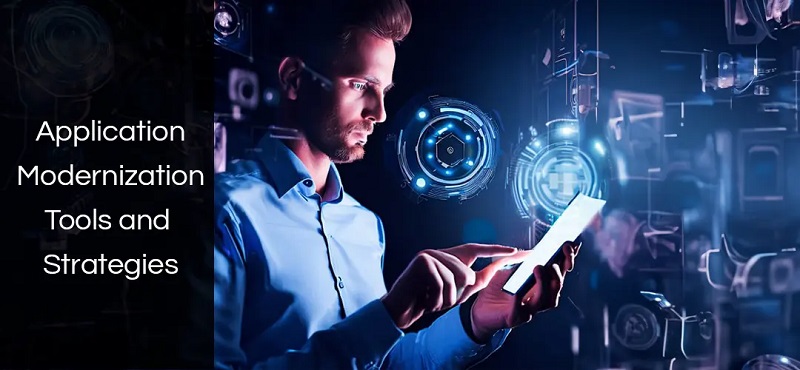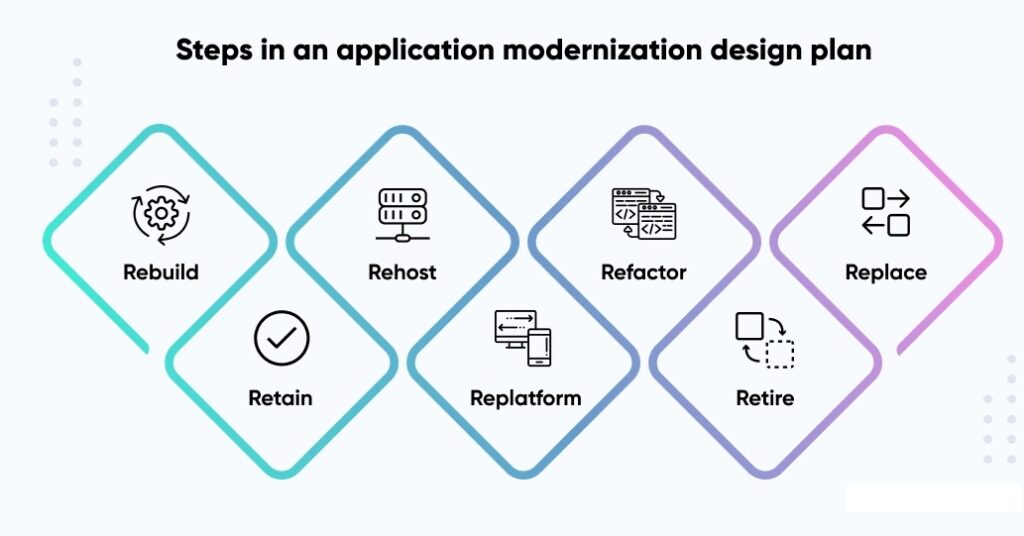Innovation is at a pace these days that has made it difficult for companies to meet the desired requirements of their clients or customers.
Business enterprises from various sectors are reluctant to modernize their applications.
Imagine this: app started subtly. Data started whispering the truth first.
Metrics dipped, user engagement declined, and churn started creeping upwards.
Then came the support tickets, a digital deluge of complaints about slow loading times, clunky interfaces, and features that felt like relics from a bygone mobile era.
Once-revolutionary business app, the culmination of countless sprints and late-night bug hunts, becoming a digital albatross.
A full rewrite?
Impractical and time-consuming. But clinging to the outdated version meant watching the competitive edge dull.
That’s when needs the game-changer: app modernization. It’s a chance to recapture the former glory without starting from scratch.
Here’s the thing: app modernization isn’t about slapping a fresh coat of paint on a crumbling building.
It’s a strategic approach that leverages cutting-edge tools and technologies to breathe new life into your legacy app.
Why apps need modernization?
As technology marches forward, so too do user expectations for mobile apps. Once cutting-edge features become commonplace, legacy apps built on older tech stacks can feel sluggish and outdated.
Furthermore, user interface (UI) trends evolve rapidly, leaving behind apps with clunky interfaces that feel frustrating and unintuitive compared to sleek, modern designs.
This is where app modernization steps in, breathing new life into these apps by leveraging the latest tools and technologies to deliver a smooth, efficient, and visually appealing user experience.
And let me tell you, the tools available today are nothing short of awe-inspiring.
The Modernization Toolbox: Your Weapons of Choice
1. Assessment and Planning: Shining a Light on the Code Caverns
Before diving headfirst into modernization, you need a clear picture of your app’s current state. Tools like CloudBees Application Portfolio Management and Flexera Cloudability can help you analyze your app’s architecture, identify potential modernization targets, and estimate the resources needed. Think of them as spelunking gear, allowing you to explore the caverns of your code and understand its strengths and weaknesses.
2. Containerization
One of the most powerful tools in the app modernization arsenal is containerization. Tools like Docker and Kubernetes allow you to package your legacy application into lightweight, portable containers. This makes deploying your app across different environments (cloud, on-premises) and integrating with modern microservices architectures easier.
It’s like putting your old, bulky winter coat into a sleek, space-saving travel bag – the functionality remains, but the package is modern and adaptable.
3. Cloud Migration
The cloud offers unparalleled scalability, agility, and cost-effectiveness. Tools like AWS CloudEndure Migration Accelerator and Microsoft Azure Migrate can seamlessly migrate your legacy app to the cloud, allowing you to leverage the power of cloud-native services for enhanced performance and security.
Think of it as scaling the mountain of outdated technology and reaching the cloud, a vast and fertile land ripe with possibilities.
4. Low-Code/No-Code Platforms: Democratizing Modernization
For certain functionalities within your app, low-code/no-code platforms like Mendix and OutSystems can be game-changers.
These platforms allow you to build modern user interfaces and workflows without extensive coding knowledge. It’s like giving even those without coding expertise the tools to add modern features and functionalities to the existing app.
5. APIs and Microservices: Breaking Down the Monolith
Modern apps are built on a foundation of microservices – small, independent functionalities that communicate through APIs. Tools like API Gateway (AWS) and Azure API Management (Microsoft) can help you decompose your monolithic legacy app into microservices, making it more agile, scalable, and easier to maintain.
Imagine transforming your monolithic castle into a network of smaller, specialized outposts, each with a specific purpose and all connected by a robust communication network.
The Modernization Journey
While these tools are powerful, app modernization is a complex process. It requires careful planning, strategic execution, and a deep understanding of your app’s architecture and business goals. This is where a development team with expertise in app modernization comes in.
A good development team can guide you through the entire process, from assessment and planning to implementation and post-modernization support. They’ll help you choose the right tools, navigate the technical complexities, and ensure your app emerges from the modernization process stronger, more efficient, and ready to conquer the market.
So, ditch the solo act and embrace the power of collaboration—partner with a development team to embark on your app modernization journey.
Trust me, with the right tools and expertise, you can transform your legacy app from a digital dinosaur into a modern marvel, ready to thrive in the ever-evolving mobile landscape.




